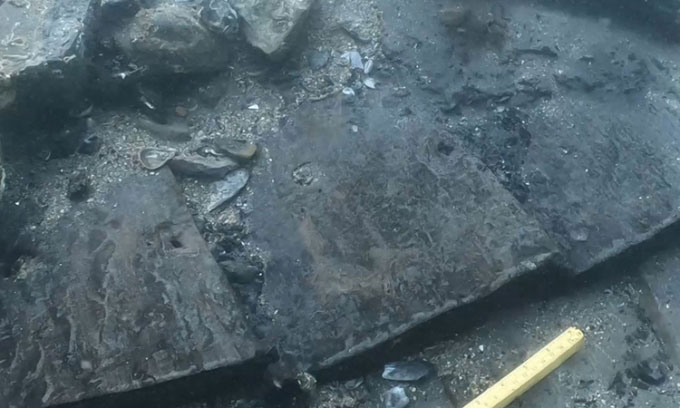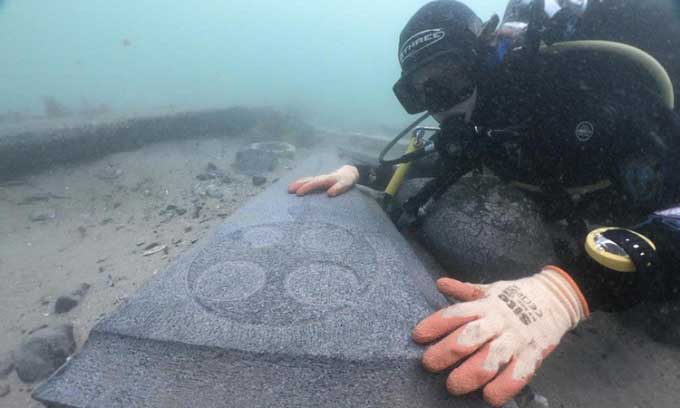Shipwreck in Dorset Made from Irish Oak Trees Cut Down Around 1242 – 1265, Sank While Transporting Marble.
The Oldest Shipwreck Still Existing in British Waters, Dating Back to the 13th Century, has been classified by the UK government as a site of the highest protection, Guardian reported on July 20. The cargo ship was discovered by a local diver in Poole Bay, Dorset, in 2020, after a storm stirred up the seabed near a busy shipping route.

Wooden planks of the ship’s hull. (Photo: Bournemouth University/Historic England)
The excavation revealed exceptionally well-preserved wood from one side of the ship’s hull. The cargo the ship was carrying had pressed down and protected this wooden section. The cargo included both carved and uncarved Purbeck marble slabs.
Archaeologists have determined that the ship is made from Irish oak. Analysis of the tree rings revealed that these trees were cut down around 1242 – 1265, during the reign of King Henry III.
While scientists have previously identified the locations of some Bronze Age shipwrecks based on remaining cargo, the wooden hulls of those ships have long since disappeared. Therefore, the shipwreck in Dorset is the oldest known shipwreck in England that still has a hull. Before this discovery, no shipwrecks had been found in British waters from the 11th to 14th centuries.
“This is a really significant discovery. A ship filled with cargo was on its way somewhere. It’s a ‘time capsule,’ and we can learn a lot from it,” said Hefin Meara, a maritime archaeologist at Historic England.

Diver examines one of the marble slabs the ship was carrying. (Photo: Bournemouth University/Historic England)
Two of the burial slabs are carved similarly to those found in churches from that period, but they differ in that they remain pristine with visible carving marks. Each slab is decorated with a type of cross that archaeologists have previously believed belonged to different periods.
“The new discovery shows that these designs were actually used at the same time. The question is whether they were made to order or just made on speculation and sent to various places?” Meara said.
“This is evidence of an industry. The ancients quarried stone, carved it, and finished it. These were popular products exported everywhere, from the coastal areas of England to Ireland and mainland Europe. This highlights an interesting point that not only the slabs were in demand, but also the skills of local craftsmen,” Meara added.

















































